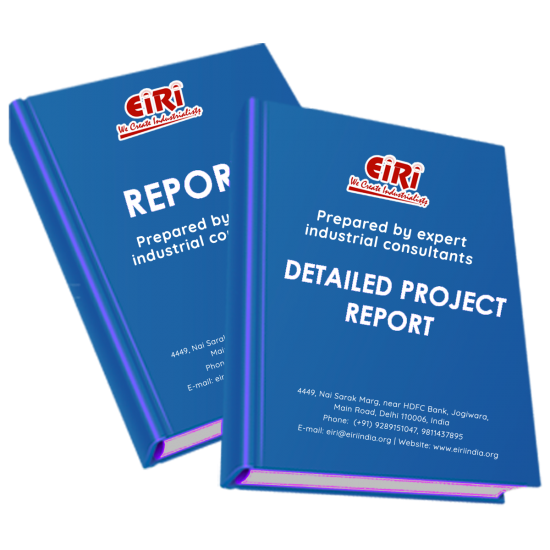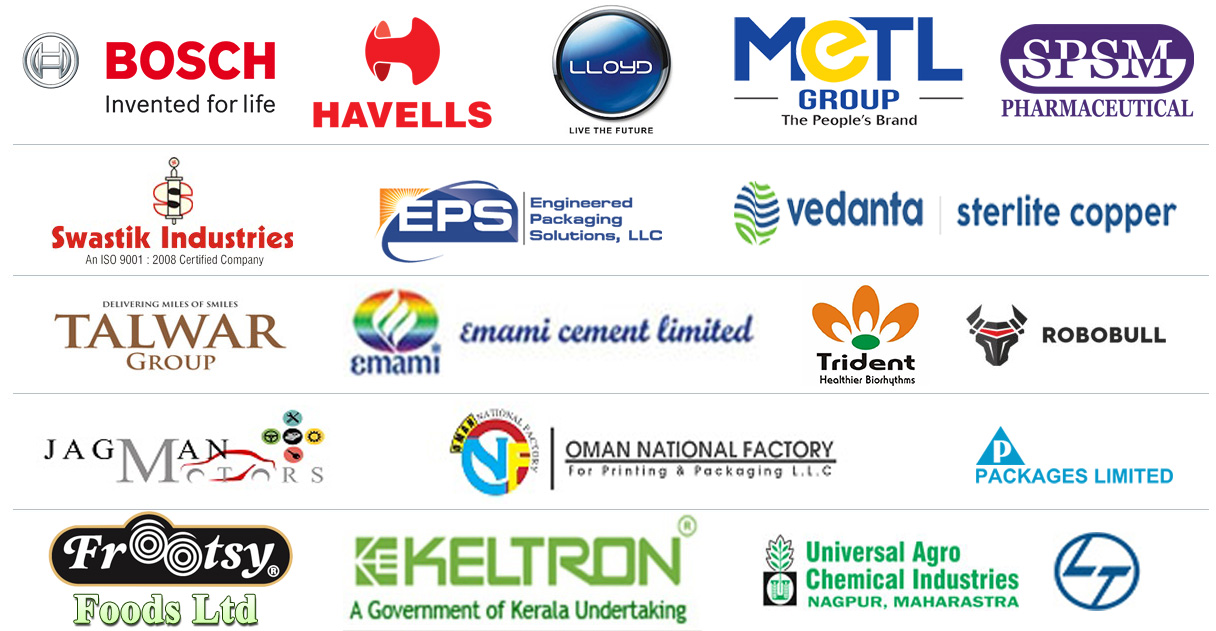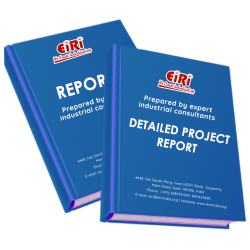Detailed Project Report on Laminated Sheets/Electrical Insulation Board

- More than 40 years of experience
- Managed by expert industrial consultants
- ISO 9001-2015 Certified
- Registered under MSME, UAM No: DL01E0012000
- 24/5 Research Support
Get your quesries resolved from an industry expert. Ask your queries before report or book purchase. - Custom Research Service
Speak to the our consultant to design an exclusive study to serve your research needs. - Quality Assurance
All reports are prepared by highly qualified consultants & verified by a panel of experts. - Information Security
Your personal & confidential information is safe & secure.
LAMINATED SHEETS/ELECTRICAL INSULATION BOARD
[EIRI/EDPR/1769] J.C. 611
INTRODUCTION
Decorative plastic laminate is a durable flat sheeting material used in home and industrial furnishings. It is most familiar under the Formica brand name. The Formica Corporation is the world's largest manufacturer of plastic laminate. Other well known manufacturers include the Premark Corporation and DuPont.
Decorative laminate is commonly used to surface kitchen counters, table tops, and cabinetry because of its resistance to stains, scratches, and heat. The laminate sheets are made up of three layers: the bottom layer of brown paper coated with phenolic resin, a second layer of paper decorated with the desired pattern, and a third layer of clear sheet. Both the second and third layers are coated with melamine resin.
Plastic laminate was first used as an insulating material for industrial products. Its invention is credited to two engineers, Herbert A. Faber and Daniel J. O'Conor. In the early 1900s, these two joined the Westinghouse Company in Pittsburgh as part of a dream team of scientists working on insulating material and phenolic laminate resins. Phenolic laminate resins had been developed around this time by the Belgian chemist Leo Baekeland. Baekeland condensed phenol and formaldehyde to produce the first totally synthetic plastic, Bakelite. The material was resistant to heat, water, chemicals, and electric current, thus having the properties to replace hard rubber and shellac for electrical insulation. Baekeland's many experiments included impregnating paper with Bakelite resin and then compressing it under molds at high pressure and temperature in a process known as thermosetting. The two Westinghouse engineers worked in this same vein. They began by impregnating heavy canvas with Bakelite resin, and by 1913 they had applied for a patent for a flat laminate sheet made from Bakelite and paper. Faber called the new plastic laminate Formica: "for" (in place of) "mica" (mineral used as electrical insulation material).
Faber and O'Conor left Westinghouse to found their own company in 1913, the Formica Insulating Company in Cincinnati, Ohio. The new company produced rings and tubes of plastic laminate for electrical insulating purposes, but by 1914, Faber and O'Conor were using a press to churn out flat laminate sheets. The laminate was widely used in radio sets in commercial shipping and naval vessels to insulate coils, tuners, and other parts. But plastic laminate was soon used for its decorative properties as well because its flawless, uniform character was the perfect radio exterior. By 1921, the laminate manufactured by the Formica Insulating Company had been integrated into the manufacture of home radios as well as ship radios.
In 1927, Faber and O'Conor discovered that by adding decorative paper through a lithographic printing process, their laminates could be made with patterns that simulated wood grains and marble. As the laminate became more colorful and decorative, its market expanded. Faux marble laminate was popular for soda fountains in the 1930s, and a wood grain laminate was used in place of aluminum inside airplanes in the
Decorative plastic laminate sheeting is mode of resins that react with aldehydes during the thermosetting process. 1940s. manufacturing improvements soon enabled plastic laminate to resist cigarette burns, and the material became more attractive, colorful, and durable, spurring its use by manufacturers of kitchen and dining furniture.
Decorative plastic laminate sheeting is made of resins that react with aldehydes during the thermosetting process. The resins are laminated onto layers of kraft paper topped with a decorative sheet. Kraft paper is the same brown paper used in grocery bags. The first plastic laminates were made with phenolic resin, a polymer of formaldehyde and phenol. Phenolic resins produce only dark colors. In the 1930s, a urea-based resin called melamine was developed that produced a clear surface. In the modern manufacturing process, the top two layers of paper are impregnated with melamine resin, and the lower layers use phenolic.
COST ESTIMATION
Plant Capacity 8000 Nos/Day
Land & Building (4400 sq.mt.) Rs. 3.34 Cr
Plant & Machinery Rs. 1.12 Cr
Working Capital for 2 Months Rs. 14.04 Cr
Total Capital Investment Rs. 18.82 Cr
Rate of Return 35%
Break Even Point 37%
CONTENTS
INTRODUCTION
PROPERTIES
ELECTRICAL PROPERTIES
USES AND APPLICATION
B.I.S. SPECIFICATION
MARKET SURVEY
MANUFACTURERS/SUPPLIERS OF PHENOLIC LAMINATED SHEETS
PHENOL FORMALDEHYDE RESIN
MANUFACTURING PROCESS OF LAMINATED SHEET
SPECIFICATION OF LAMINATED SHEET
PHENOLIC RESIN BONDED PAPER BASED BOARD
PROCESS FLOW CHART FOR LAMINATED SHEET
QUALITY CONTROL FOR LAMINATED SHEETS
PLANT LAYOUT
SUPPLIERS OF PLANT AND MACHINERY
SUPPLIERS OF RAW MATERIAL FOR LAMINATED SHEETS
APPENDIX – A:
01. PLANT ECONOMICS
02. LAND & BUILDING
03. PLANT AND MACHINERY
04. OTHER FIXED ASSESTS
05. FIXED CAPITAL
06. RAW MATERIAL
07. SALARY AND WAGES
08. UTILITIES AND OVERHEADS
09. TOTAL WORKING CAPITAL
10. TOTAL CAPITAL INVESTMENT
11. COST OF PRODUCTION
12. TURN OVER/ANNUM
13. BREAK EVEN POINT
14. RESOURCES FOR FINANCE
15. INSTALMENT PAYABLE IN 5 YEARS
16. DEPRECIATION CHART FOR 5 YEARS
17. PROFIT ANALYSIS FOR 5 YEARS
18. PROJECTED BALANCE SHEET FOR (5 YEARS)
How to Make Project Report?
Detailed Project Report (DPR) includes Present Market Position and Expected Future Demand, Technology, Manufacturing Process, Investment Opportunity, Plant Economics and Project Financials. comprehensive analysis from industry covering detailed reporting and evaluates the position of the industry by providing insights to the SWOT analysis of the industry.
Each report include Plant Capacity, requirement of Land & Building, Plant & Machinery, Flow Sheet Diagram, Raw Materials detail with suppliers list, Total Capital Investment along with detailed calculation on Rate of Return, Break-Even Analysis and Profitability Analysis. The report also provides a birds eye view of the global industry with details on projected market size and then progresses to evaluate the industry in detail.
We can prepare detailed project report on any industry as per your requirement.
We can also modify the project capacity and project cost as per your requirement. If you are planning to start a business, contact us today.
Detailed Project Report (DPR) gives you access to decisive data such as:
- Market growth drivers
- Factors limiting market growth
- Current market trends
- Market structure
- Key highlights
Overview of key market forces propelling and restraining market growth:
- Up-to-date analyses of market trends and technological improvements
- Pin-point analyses of market competition dynamics to offer you a competitive edge major competitors
- An array of graphics, BEP analysis of major industry segments
- Detailed analyses of industry trends
- A well-defined technological growth with an impact-analysis
- A clear understanding of the competitive landscape and key product segments
Need Customized Project Report?
- Ask for FREE project related details with our consultant/industry expert.
- Share your specific research requirements for customized project report.
- Request for due diligence and consumer centric studies.
- Still haven't found what you're looking for? Speak to our Custom Research Team
About Engineers India Research Institute:
Note: We can also prepare project report on any subject based on your requirement and country. If you need, we can modify the project capacity and project cost based on your requirement.
Our Clients

Our Approach
- Our research reports comprehensively cover Indian markets (can be modified as per your country), present investigation, standpoint and gauge for a time of five years*.
- The market conjectures are produced on the premise of optional research and are cross-accepted through associations with the business players
- We use dependable wellsprings of data and databases. What's more, data from such sources is handled by us and incorporated into the report
Why buy EIRI reports?
- Our project reports include detailed analysis that help to get industry Present Market Position and Expected Future Demand.
- Offer real analysis driving variables for the business and most recent business sector patterns in the business
- This report comprehends the present status of the business by clarifying a complete SWOT examination and investigation of the interest supply circumstance
- Report gives investigation and top to bottom money related correlation of real players/competitors
- The report gives gauges of key parameters which foresees the business execution





















